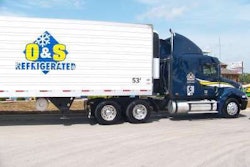The American Trucking Associations told a Congressional committee on Tuesday, June 9, that a cap-and-trade program would impose significant costs on the trucking industry and American consumers. In his statement on behalf of ATA, Tommy Hodges, ATA first vice chairman, said that the American Clean Energy and Security Act of 2009 (H.R. 2454) threatens to increase fuel costs significantly and jeopardizes the economic viability of trucking companies.
“Fleets are extremely sensitive to rapidly shifting operating costs given thin operating margins,” Hodges said. “These margins continue to be chipped away, given the numerous and unprecedented costs being imposed upon the industry to reduce emissions from trucks.” Hodges said that provisions in H.R. 2454’s cap-and-trade program grant oil refiners 2 percent of the carbon allowances between 2014 and 2016 to help mitigate refinery greenhouse gas emissions.
“This amount is inadequate and will result in significant price increases for refined products,” Hodges said. “The 2 percent allotment to refineries over a two-year period covers the refineries’ facility emissions, but totally ignores carbon emissions from the combustion of petroleum products, leaving downstream users, such as trucking companies, exposed to dramatic and sudden fuel price spikes.”
ATA believes that mobile sources, such as commercial trucks, should be addressed differently than traditional stationary sources under any proposed carbon reduction regulatory program, said Hodges, who also serves as chairman of ATA’s Sustainability Task Force, which developed a progressive sustainability agenda targeting a reduction in fuel consumption by 86 billion gallons and CO2 emissions by 900 million tons for all vehicles over the next 10 years by:










